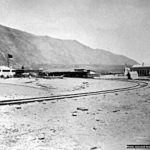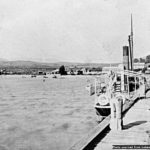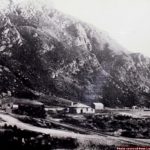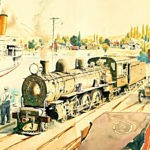European exploration of the Lake Wakatipu district began in the late 1850s, but it was the discovery of gold in 1862 that precipitated a rush of men and materials to the district surrounding Lake Wakatipu. Kingston, at the southern end of Lake Wakatipu, quickly assumed a position of importance as a link in the district’s transport system.
The village of Kingston reached its bustling and rowdy peak during those goldmining days. Goldminers and diggers passed through Kingston on the way to or from the Wakatipu, Shotover and Arrowtown goldfields to the north and the Nevis field to the south. In the 1861 to 1865 period the rail had not arrived, there was no road between Kingston and Kawerau-Queenstown, and boat services across the lake were somewhat spasmodic and small-scale.
Kingston was a terminus for the bullock wagons and pack horses. Frequently there would be more than 35 bullock trains in the town at a time. There were more hotels in those days than at any other stage in the town’s history, bringing along with them noisy overnights and brawls. Hotels that existed in the 1862-1865 period included the Exchange, Arch Campbell, Cambridge, Royal, J. Joyce, Cornwall, Commercial, Ship Inn and St Johns. There were also two banks, a police station and several stores.
The original town had a few small wharves towards the east of the southern shore. With the arrival of the railway and the building of the rail wharf and new hotels, the move was to the west end of the town under the lee of the Eyre Mountains. It was sheltered from the winds and waves rolling down the lake but it was cold and with less daylight, especially in the winter months. Mr J.H Atkinson reminisced: “In 1892, I was stationed there (Kingston) for some weeks, as one of the railway staff; there being one guard, station master, cadet, ganger and two surfacemen. The village consisted of an hotel, two houses, four huts and two houses in the distance. The nearest shops were at Queenstown, 25 miles over the lake, and 37 miles down the line at Lumsden, by train. In 1904, I went to Kingston as driver of the Flyer. The village had increased by two houses, one of which I occupied. This was a place avoided by railway men on account of its isolation” (Southland Times, 6 July 1960). Today there are many holiday batches, known locally as cribs, a petrol station, café, a golf course and not much more.







